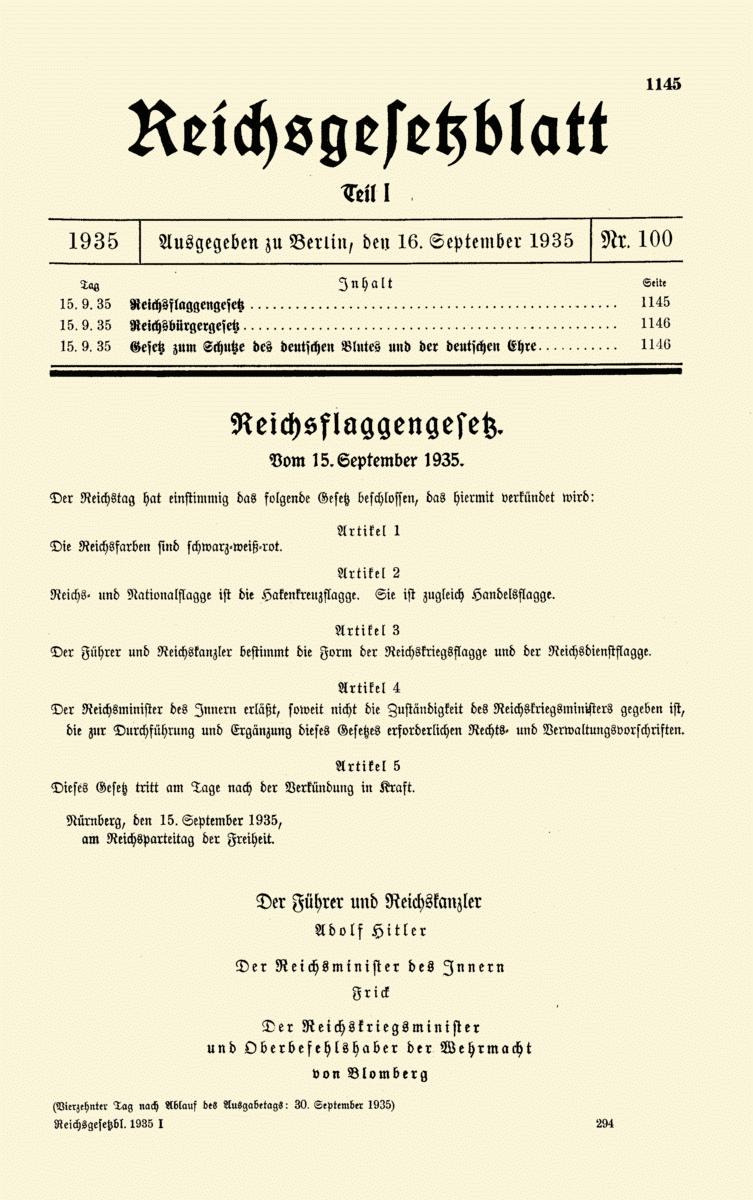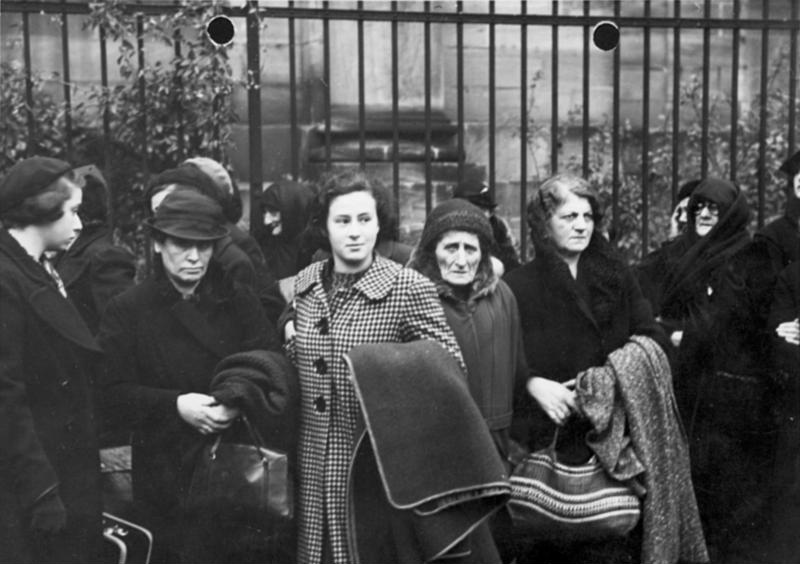|
Das Schwarze Korps
''Das Schwarze Korps'' (; German for "The Black Corps") was the official newspaper of the ''Schutzstaffel'' (SS). This newspaper was published on Wednesdays and distributed free of charge. All SS members were encouraged to read it. The chief editor was SS leader Gunter d'Alquen; the publisher was Max Amann of the Franz-Eher-Verlag publishing company. The paper was hostile to many groups, with frequent articles condemning the Catholic Church, Jews, Communism, Freemasonry, and others. The newspaper was published in close co-operation with the ''Sicherheitsdienst'' (SD; Security Service), which had substantial editorial control. The first edition appeared on 6 March 1935. In November of the same year, publication reached 200,000 and by 1944 had increased to 750,000. The newspaper saw some distribution outside Germany. History and contents Formed in 1935, ''Das Schwarze Korps'' was the official newspaper of the ''Schutzstaffel'' (SS). The newspaper was created to be a defender of N ... [...More Info...] [...Related Items...] OR: [Wikipedia] [Google] [Baidu] |
Nuremberg Laws
The Nuremberg Laws (german: link=no, Nürnberger Gesetze, ) were antisemitic and racist laws that were enacted in Nazi Germany on 15 September 1935, at a special meeting of the Reichstag convened during the annual Nuremberg Rally of the Nazi Party. The two laws were the Law for the Protection of German Blood and German Honour, which forbade marriages and extramarital intercourse between Jews and Germans and the employment of German females under 45 in Jewish households; and the Reich Citizenship Law, which declared that only those of German or related blood were eligible to be Reich citizens. The remainder were classed as state subjects without any citizenship rights. A supplementary decree outlining the definition of who was Jewish was passed on 14 November, and the Reich Citizenship Law officially came into force on that date. The laws were expanded on 26 November 1935 to include Romani and Black people. This supplementary decree defined Romanis as "enemies of the rac ... [...More Info...] [...Related Items...] OR: [Wikipedia] [Google] [Baidu] |
Völkischer Beobachter
The ''Völkischer Beobachter'' (; "'' Völkisch'' Observer") was the newspaper of the Nazi Party (NSDAP) from 25 December 1920. It first appeared weekly, then daily from 8 February 1923. For twenty-four years it formed part of the official public face of the Nazi Party until its last edition at the end of April 1945. The paper was banned and ceased publication between November 1923, after Adolf Hitler's arrest for leading the unsuccessful Beer Hall Putsch in Munich, and February 1925, the approximate date of the relaunching of the Party. History The "fighting paper of the National Socialist movement of Greater Germany", or ''"Kampfblatt der nationalsozialistischen Bewegung Großdeutschlands"'' as it called itself, had its origin as the ''Münchener Beobachter'', or "Munich Observer", an anti-Semitic semi-weekly scandal-oriented paper which in 1918 was acquired by the Thule Society and, in August 1919, was renamed ''Völkischer Beobachter'' (see '' Völkisch'' and ''Völkisch'' ... [...More Info...] [...Related Items...] OR: [Wikipedia] [Google] [Baidu] |
Anschluss
The (, or , ), also known as the (, en, Annexation of Austria), was the annexation of the Federal State of Austria into the German Reich on 13 March 1938. The idea of an (a united Austria and Germany that would form a " Greater Germany") began after the unification of Germany excluded Austria and the German Austrians from the Prussian-dominated German Empire in 1871. Following the end of World War I with the fall of the Austro-Hungarian Empire, in 1918, the newly formed Republic of German-Austria attempted to form a union with Germany, but the Treaty of Saint Germain (10 September 1919) and the Treaty of Versailles (28 June 1919) forbade both the union and the continued use of the name "German-Austria" (); and stripped Austria of some of its territories, such as the Sudetenland. Prior to the , there had been strong support in both Austria and Germany for unification of the two countries. In the immediate aftermath of the dissolution of the Habsburg monarchy—with ... [...More Info...] [...Related Items...] OR: [Wikipedia] [Google] [Baidu] |
Reinhard Heydrich
Reinhard Tristan Eugen Heydrich ( ; ; 7 March 1904 – 4 June 1942) was a high-ranking German SS and police official during the Nazi era and a principal architect of the Holocaust. He was chief of the Reich Security Main Office (including the Gestapo, Kripo, and SD). He was also ''Stellvertretender Reichsprotektor'' (Deputy/Acting Reich-Protector) of Bohemia and Moravia. He served as president of the International Criminal Police Commission (ICPC, now known as Interpol) and chaired the January 1942 Wannsee Conference which formalised plans for the " Final Solution to the Jewish question"—the deportation and genocide of all Jews in German-occupied Europe. Many historians regard Heydrich as the darkest figure within the Nazi regime; Adolf Hitler described him as "the man with the iron heart". He was the founding head of the ''Sicherheitsdienst'' (Security Service, SD), an intelligence organisation charged with seeking out and neutralising resistance to the Nazi Part ... [...More Info...] [...Related Items...] OR: [Wikipedia] [Google] [Baidu] |
Bolshevism
Bolshevism (from Bolshevik) is a revolutionary socialist current of Soviet Marxist–Leninist political thought and political regime associated with the formation of a rigidly centralized, cohesive and disciplined party of social revolution, focused on overthrowing the existing capitalist state system, seizing power and establishing the "dictatorship of the proletariat".Alexander TarasovThe Sacred Function of the Revolutionary Subject/ref> Bolshevism originated at the beginning of the 20th century in Russia and was associated with the activities of the Bolshevik faction within the Russian Social Democratic Labour Party – and first of all, the founder of the faction, Vladimir Lenin. Remaining on the soil of Marxism, Bolshevism at the same time absorbed elements of the ideology and practice of the revolutionaries of the second half of the 19th century ( Sergey Nechaev, Pyotr Tkachev, Nikolay Chernyshevsky) and had many points of contact with such domestic left–wing radical mo ... [...More Info...] [...Related Items...] OR: [Wikipedia] [Google] [Baidu] |
Nazi Party
The Nazi Party, officially the National Socialist German Workers' Party (german: Nationalsozialistische Deutsche Arbeiterpartei or NSDAP), was a far-right politics, far-right political party in Germany active between 1920 and 1945 that created and supported the ideology of Nazism. Its precursor, the German Workers' Party (; DAP), existed from 1919 to 1920. The Nazi Party emerged from the Extremism, extremist German nationalism, German nationalist, racism, racist and populism, populist paramilitary culture, which fought against the communism, communist uprisings in post–World War I Germany. The party was created to draw workers away from communism and into nationalism. Initially, Nazi political strategy focused on anti–big business, anti-bourgeoisie, bourgeois, and anti-capitalism, anti-capitalist rhetoric. This was later downplayed to gain the support of business leaders, and in the 1930s, the party's main focus shifted to Antisemitism, antisemitic and Criticism of ... [...More Info...] [...Related Items...] OR: [Wikipedia] [Google] [Baidu] |
The Holocaust
The Holocaust, also known as the Shoah, was the genocide of European Jews during World War II. Between 1941 and 1945, Nazi Germany and its collaborators systematically murdered some six million Jews across German-occupied Europe; around two-thirds of Europe's Jewish population. The murders were carried out in pogroms and mass shootings; by a policy of extermination through labor in concentration camps; and in gas chambers and gas vans in German extermination camps, chiefly Auschwitz-Birkenau, Bełżec, Chełmno, Majdanek, Sobibór, and Treblinka in occupied Poland. Germany implemented the persecution in stages. Following Adolf Hitler's appointment as chancellor on 30 January 1933, the regime built a network of concentration camps in Germany for political opponents and those deemed "undesirable", starting with Dachau on 22 March 1933. After the passing of the Enabling Act on 24 March, which gave Hitler dictatorial plenary powers, the government began isolating Je ... [...More Info...] [...Related Items...] OR: [Wikipedia] [Google] [Baidu] |
Adolf Hitler
Adolf Hitler (; 20 April 188930 April 1945) was an Austrian-born German politician who was dictator of Nazi Germany, Germany from 1933 until Death of Adolf Hitler, his death in 1945. Adolf Hitler's rise to power, He rose to power as the leader of the Nazi Party, becoming the Chancellor of Germany, chancellor in 1933 and then taking the title of in 1934. During his dictatorship, he initiated European theatre of World War II, World War II in Europe by invasion of Poland, invading Poland on 1 September 1939. He was closely involved in military operations throughout the war and was central to the perpetration of the Holocaust: the genocide of Holocaust victims, about six million Jews and millions of other victims. Hitler was born in Braunau am Inn in Austria-Hungary and was raised near Linz. He lived in Vienna later in the first decade of the 1900s and moved to Germany in 1913. He was decorated during his Military career of Adolf Hitler, service in the German Army in Worl ... [...More Info...] [...Related Items...] OR: [Wikipedia] [Google] [Baidu] |
Kristallnacht
() or the Night of Broken Glass, also called the November pogrom(s) (german: Novemberpogrome, ), was a pogrom against Jews carried out by the Nazi Party's (SA) paramilitary and (SS) paramilitary forces along with some participation from the Hitler Youth and German civilians throughout Nazi Germany on 9–10 November 1938. The German authorities looked on without intervening.German Mobs' Vengeance on Jews", ''The Daily Telegraph'', 11 November 1938, cited in The name (literally 'Crystal Night') comes from the shards of broken glass that littered the streets after the windows of Jewish-owned stores, buildings and synagogues were smashed. The pretext for the attacks was the assassination of the German diplomat Ernst vom Rath by Herschel Grynszpan, a 17-year-old German-born Polish Jew living in Paris. Jewish homes, hospitals and schools were ransacked as attackers demolished buildings with sledgehammers. Rioters destroyed 267 synagogues throughout Germany, Austria and the ... [...More Info...] [...Related Items...] OR: [Wikipedia] [Google] [Baidu] |
Aryan
Aryan or Arya (, Indo-Iranian *''arya'') is a term originally used as an ethnocultural self-designation by Indo-Iranians in ancient times, in contrast to the nearby outsiders known as 'non-Aryan' (*''an-arya''). In Ancient India, the term ''ā́rya'' was used by the Indo-Aryan speakers of the Vedic period as an endonym (self-designation) and in reference to the geographic region known as '' Āryāvarta'' ('abode of the Aryas'), where the Indo-Aryan culture emerged. In the ''Avesta'' scriptures, ancient Iranian peoples similarly used the term ''airya'' to designate themselves as an ethnic group, and in reference to their mythical homeland, '' Airyanem Waēǰō'' ('stretch of the Aryas'). The root also forms the etymological source of place names such as ''Iran'' (*''Aryānām'') and '' Alania'' (*''Aryāna-''). Although the root ''*arya-'' may be of Proto-Indo-European (PIE) origin, its use as an ethnocultural self-designation is only attested among Indo-Iranian peoples, ... [...More Info...] [...Related Items...] OR: [Wikipedia] [Google] [Baidu] |
Johannes Stark
Johannes Stark (, 15 April 1874 – 21 June 1957) was a German physicist who was awarded the Nobel Prize in Physics in 1919 "for his discovery of the Doppler effect in canal rays and the splitting of spectral lines in electric fields". This phenomenon is known as the Stark effect. Stark received his Ph.D. in physics from the University of Munich in 1897 under the supervision of Eugen von Lommel, and served as Lommel's assistant until his appointment as a lecturer at the University of Göttingen in 1900. He was an extraordinary professor at Leibniz University Hannover from 1906 until he became a professor at RWTH Aachen University in 1909. In 1917, he became professor at the University of Greifswald, and he also worked at the University of Würzburg from 1920 to 1922. A supporter of Adolf Hitler from 1924, Stark was one of the main figures, along with fellow Nobel laureate Philipp Lenard, in the anti-Semitic ''Deutsche Physik'' movement, which sought to remove Jewish scientist ... [...More Info...] [...Related Items...] OR: [Wikipedia] [Google] [Baidu] |



.jpg)
_approved_at_the_8th_Party_Congress_(1919).jpg)



